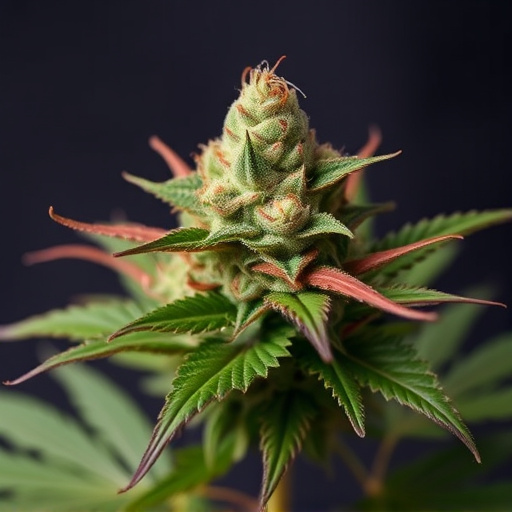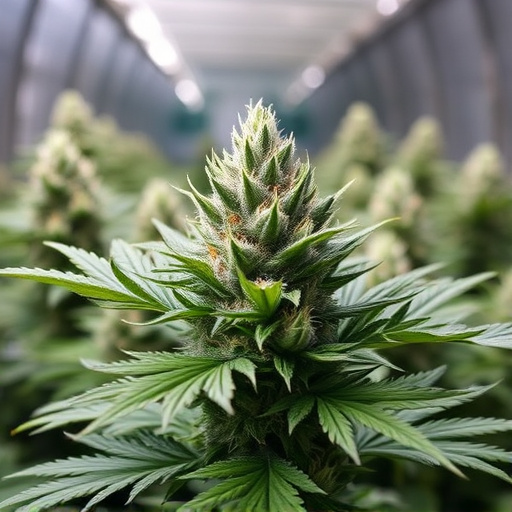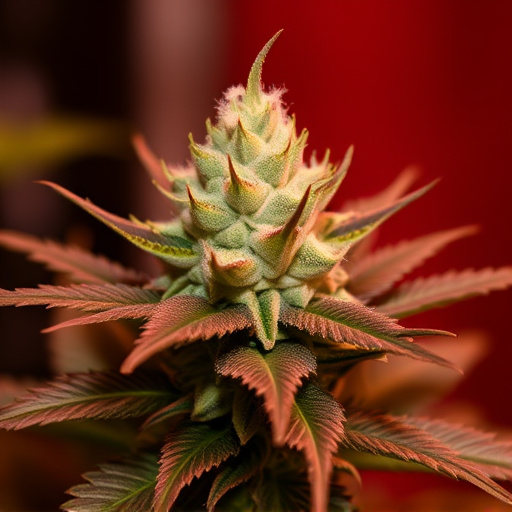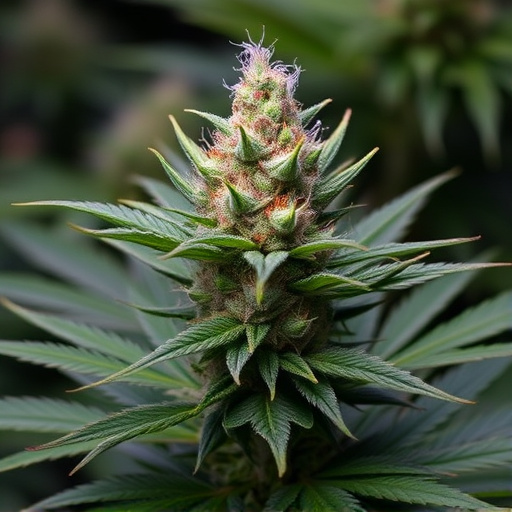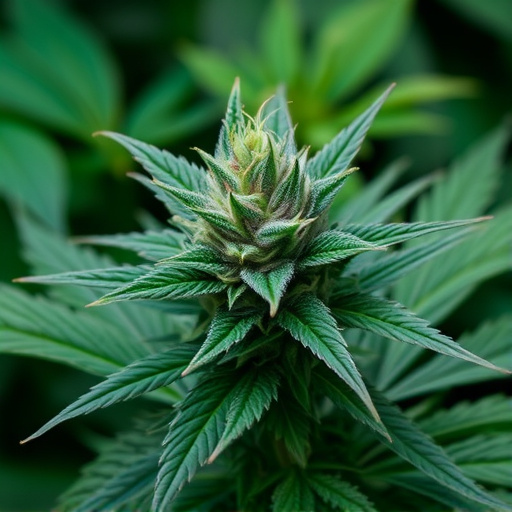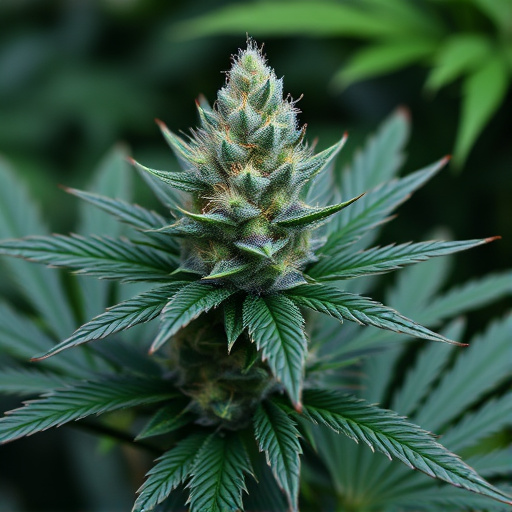The medical cannabis market leverages diverse strain profiles, with best-selling varieties tailored to specific conditions like chronic pain, insomnia, anxiety, and depression. Cannabidiol (CBD) and tetrahydrocannabinol (THC) interact with the endocannabinoid system to offer therapeutic benefits. Indica strains provide relaxation, while Sativa aids in pain management. Starting dosages should be low, with gradual adjustments based on individual needs, as detailed labeling on best-selling cannabis strains enables informed consumer choices.
Discover the power of cannabis for medical conditions with our comprehensive guide. “Understanding Cannabis Strains and Their Effects” breaks down how different varieties impact your health. We explore popular medical conditions—like anxiety, pain, and insomnia—and recommend specific best-selling cannabis strains known for their therapeutic benefits. Learn essential safety considerations and dosage guidelines to make informed decisions.
- Understanding Cannabis Strains and Their Effects
- Popular Medical Conditions and Recommended Strains
- Safety Considerations and Dosage Guidelines
Understanding Cannabis Strains and Their Effects

Cannabis has gained significant attention for its potential medical benefits, and understanding different strains is crucial in this context. Each cannabis strain possesses unique chemical profiles, primarily consisting of cannabidiol (CBD) and tetrahydrocannabinol (THC), the two most well-known compounds. These compounds interact with our bodies’ endocannabinoid system, leading to various therapeutic effects. The best selling cannabis strains often attract attention due to their balanced or high THC-to-CBD ratios, which can target specific medical conditions effectively.
For instance, strains with higher CBD content are popular for their potential anti-inflammatory and anxiolytic properties, making them suitable for managing chronic pain and anxiety disorders. On the other hand, strains rich in THC may be preferred for treating nausea, stimulating appetite, and providing relaxation, especially in patients facing chemotherapy or HIV/AIDS. Many medical users seek out specific strains known for their calming effects, pain relief, or sleep-inducing properties, which can greatly improve their quality of life.
Popular Medical Conditions and Recommended Strains
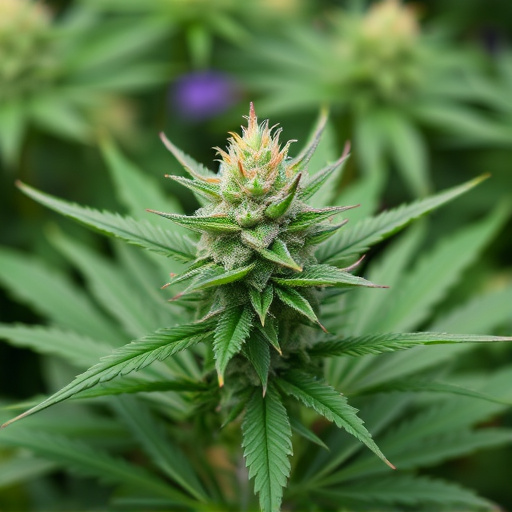
In today’s medical cannabis landscape, several conditions are commonly treated with various strains known for their therapeutic properties. Among the most popular are chronic pain, insomnia, anxiety, and depression. For chronic pain patients, Indica-dominant strains like AC/DC and Granddaddy Purple are highly recommended due to their relaxing effects that can help ease muscular aches and inflammation. Insomnia sufferers often find relief in sleep-inducing Sativa strains such as Blue Dream and Girl Scout Cookies, which can promote restful sleep without causing excessive drowsiness during the day.
Anxiety and depression can be managed with a variety of strains, including those high in CBD (cannabidiol). Strains like Charlotte’s Web and Lemon Balm are popular choices because they offer a calm, soothing effect without intense psychoactive properties. For more severe cases or patients seeking an energizing boost, hybrid strains like OG Kush and Northern Lights can be beneficial, providing a balance between Indica and Sativa effects to target specific symptoms of these conditions. The best-selling cannabis strains often cater to these medical needs, highlighting the ongoing evolution of the industry in meeting patient demands.
Safety Considerations and Dosage Guidelines

When exploring medical cannabis, safety considerations and dosage guidelines are paramount. It’s crucial to remember that while cannabis has shown promise in treating various conditions, it’s not a one-size-fits-all solution. Different strains, with their unique cannabinoid profiles, may be more effective for specific symptoms or conditions. For instance, Indica strains are often preferred for sleep and anxiety due to their higher levels of THC, which can induce relaxation. Conversely, Sativa varieties, with their higher CBD content, might be better suited for pain management and mood elevation.
Proper dosage is another critical aspect. As with any medication, the right amount varies from person to person based on factors like body weight, tolerance, and the condition being treated. Starting low and increasing gradually is generally recommended, especially when using cannabis therapeutically. Many healthcare professionals suggest starting with a low THC content (less than 10%) and a balanced CBD-to-THC ratio to avoid potential side effects. The best-selling cannabis strains in the market often come with detailed labeling and information about their cannabinoid profiles, making it easier for consumers to make informed decisions based on their specific needs.
When selecting a cannabis strain for medical conditions, understanding the unique effects of each variety is key. By considering popular medical conditions and their corresponding recommended strains, patients can make informed decisions. Safety considerations and dosage guidelines must always be prioritized to ensure a beneficial and risk-free experience. Among the best-selling cannabis strains, those with high CBD content or specific terpene profiles often prove most effective for various ailments. Remember, consulting healthcare professionals is essential for personalized guidance in navigating the world of medical cannabis.




